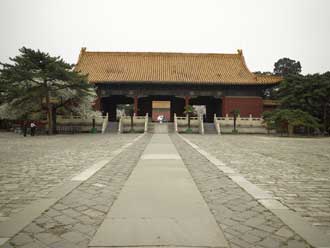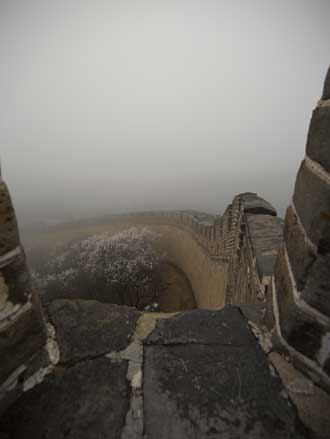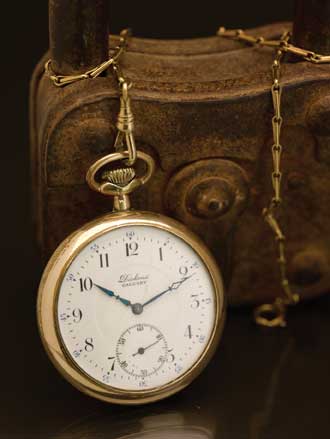Erik-Jan Manoury, Teledyne Dalsa
Manufacturers of cameras and components offer systems for professional photographers that incorporate the latest technological trends.
Professional photographers who shoot for the world’s most famous glossy magazines have special challenges and certain needs in camera hardware. After all, their reputations are only as good as their equipment, so they look for cameras and components with the latest technologies.
“They hear in advertising that there’s a new 80-megapixel [digital camera] back out, and if you don’t have it, you won’t get the job,” said photographer Tom Schierlitz. Whether they’re shooting Jimmy Choo stilettos for Vogue or glaciers for National Geographic, that 8-megapixel camera on the iPhone 5 just won’t cut it.
Mamiya Leaf of Tel Aviv, Israel, offers digital photographic equipment for the professional market. “We focus on medium-format cameras, anything above DSLR,” explained Dov Kalinski, Leaf Imaging CEO. “Our customers are professional photographers, institutions, schools and serious amateurs who demand the best photographic equipment on the market.”

This 1/250-second exposure of a Chinese pagoda was taken with a Mamiya 645DF and a Leaf Credo 80 digital backfitted with a Mamiya Sekor 45-mm lens set to f/4.5 and ISO 50.
A digital camera back attaches to a camera in place of a film holder and contains an electronic image sensor, allowing cameras designed to use film to take digital photographs. These backs are built to be used primarily on the medium- and large-format cameras favored by many professionals.
Mamiya Leaf’s Credo digital camera backs have various applications, including professional photo shoots for brochures and advertising products such as cars, clothing and food – things that are not moving. The cameras also are used in the fashion industry to photograph models in live fashion shoots, which is a bit different because the subjects are moving. A third application is landscape photography, which has its own challenges, since the photographers are more mobile and they are shooting outside.
Features of the Leaf Credo digital backs include a 3.2-in. high-resolution (1.15-megapixel) bright-touch LCD with a viewing angle of 170°.
The new Leaf Credo digital camera back platform is the latest example of a long-standing collaboration between Mamiya Leaf and its parent company, Phase One of Frederiksberg, Denmark, and Teledyne Dalsa of Eindhoven, Netherlands. Together, the companies developed a custom sensor and new electronics.

This 1/25-second exposure of the Great Wall of China was taken with a Mamiya 645DF and a Leaf Credo 80 digital backfitted with a Mamiya Sekor 28-mm lens set to f/8 and ISO 50.
“Leaf Credo delivers the best price:performance ratio in the large-sensor digital back market,” said Ziv Argov, marketing director at Mamiya Leaf. “Its impressive combination of high-resolution image quality, ease of use and the latest touch-screen LCD technologies makes the Leaf Credo digital back platform appealing for all photographers, regardless of their styles.”
Camera specs and features
These digital camera backs offer the highest resolution for medium-format camera systems. The three models – the Leaf Credo 80, Credo 60 and Credo 40 – offer high-quality resolutions of 80, 60 and 40 megapixels, respectively. Each features a full-frame Teledyne Dalsa CCD sensor that ranges in size from 43.9 x 32.9 mm to 53.9 x 40.4 mm, depending on the model.
Live View functionality enables precise focusing when shooting untethered, and it offers a wide viewing angle and a built-in bidirectional spirit level for comfortable, effective shooting both indoors and out.
Leaf Credo digital backs work seamlessly with the Mamiya 645DF camera, which offers shutter speeds up to 1/4000 of a second and sync speeds of up to 1/1600 of a second with Leaf shutter lenses designed by Schneider Kreuznach. However, the company’s open-platform philosophy enables compatibility with other medium-format camera bodies as well. These digital backs are optimized for shooting with Capture One software, which comprises comprehensive work flow features to capture, organize, edit, share and print images.
The CCD sensor in the Leaf Credo 80 has a dynamic range of 12.5 f-stops. The Leaf Credo 60’s sensor has a 3:4 aspect ratio – a new addition to the sensors that the company uses in its cameras.

This pocket watch was photographed with a Mamiya 645DF and a Leaf Credo 80 digital backfitted with a Mamiya Sekor 80-mm lens set to f/8, and was a 0.25-second exposure at ISO 50.
The Leaf Credo 40 offers the camera family’s fastest capture speed at 1.2 frames per second. That might sound slow to those who use cameras for industrial applications, but Dutch fashion photographer Frank Doorhof likes the speed, saying it gives models time to pose properly: “I used the Credo 60 … in a workshop with a model, and even she commented that the Credo 60′s pace was much nicer for her to pose to.”
The line’s high-resolution LCD touch screen offers rendering of 16 million colors for quick and easy verification of focus and tonal accuracy. A new dual-core microprocessor enables powerful performance for the fastest available image viewing, focusing and editing. A redesigned graphic user interface simplifies navigation and extends beyond the LCD area, allowing the user to navigate and click outside the image area. Finally, support for both FireWire 800 and the new USB 3.0 interfaces delivers fast transfer speeds when shooting tethered.
More pixels, less space
The idiom “doing more with less” still rings true when it comes to technology. As the microchip continues to shrink, more devices can fit on a single wafer. But shrinking electronics bring about a new set of challenges. To maximize the dynamic range of the sensor, Mamiya Leaf developed high-speed and low-noise electronics.
“For all of our digital backs, and especially the Leaf Credo, the challenge lies in fitting all the electronic components into a limited space,” Kalinski explained. “Many specialized components are required for fast acquisition, but they can get hot, too, and there’s no fan for active cooling.”
To solve the power and heat issues, Mamiya Leaf developed a unique low- power design that keeps the components at an optimal temperature but still lets the user operate the camera for several hours.
Sensor development
Mamiya Leaf and Teledyne Dalsa first collaborated on sensors for digital camera backs in 1997. The first result was a 6-megapixel sensor that measured 24 x 36 mm. Today, the sensor has grown to 53.7 x 40.3 mm and packs 80 megapixels. In that time, Mamiya Leaf, Phase One and Teledyne Dalsa have customized sensors whose resolution, dynamic range and spectral response satisfy the exacting demands of high-end photography.
“Over the years, the strong synergy between our companies has enabled us to leverage the latest technologies to pack an ever-increasing number of pixels onto a larger and larger CCD sensor,” Kalinski said.
For an industry that depends on stunning visuals, it’s the sensor that makes the difference. That’s what largely sets apart medium-format cameras from consumer and prosumer DSLR models.
“The difference in sensor size is, in my opinion, very important for the ‘look’ of the image, but also for the resolution and overall sharpness,” Doorhof wrote in a blog post. “The smaller the sensor, the more problems you will run into when placing a lot of pixels in that area, [and] this will translate … into loss of detail on smaller apertures but also into noise.
“But more important for me is the depth of field: The larger the sensor, the more you are able to shoot with a shallow depth of field in conditions where you normally can’t.”
Meet the author
Erik-Jan Manoury is a technical application manager and product manager at Teledyne Dalsa in its Digital Professional Imaging Group in Eindhoven, Netherlands; email: [email protected].